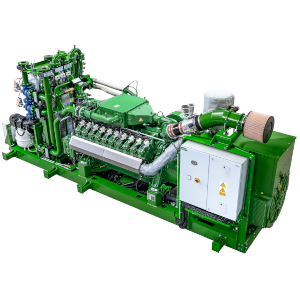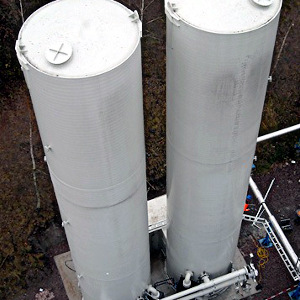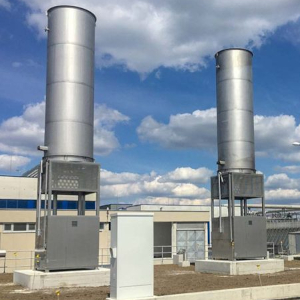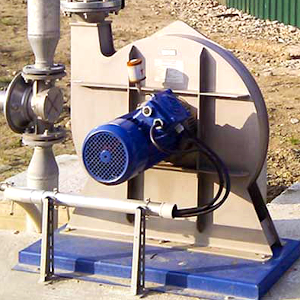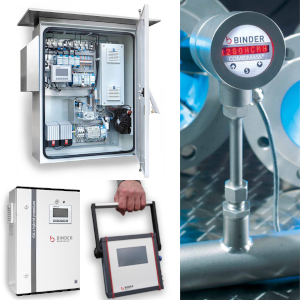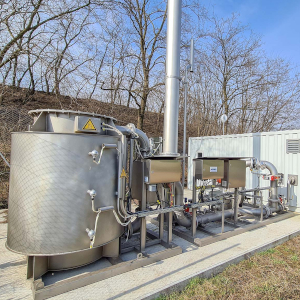degassing. flaring. valorization.
Anaerobic digestion takes place naturally in landfills, and waste degradation under mostly anaerobe conditions occurs naturally and pretty slowly. Biogas (methane and carbon dioxide) and leachate production continue for several decades even after the landfill is closed. Organic waste can dry out after a while, but it remains active for years.
Landfill gas capture is a major challenge and its subsequent destruction, burning off in a flare an absolute necessity for the climate and the environment. Morocco made a commitment at COP26 in Glasgow, as part of the Global Methane Pledge, to reduce the impact of short-term climate pollutants (STCP), in particular methane.
In generizon we know how much methane there is, we have studied and modeled (IPCC) it in a multi-year study with the GGGI and the CCAC.
According to the IEA, methane (CH4) has a much shorter atmospheric lifetime than carbon dioxide (CO2) – around 12 years compared with centuries for CO2. Methane is responsible for around 30% of the rise in global temperatures since the industrial revolution, and rapid and sustained reductions in methane emissions are key to limiting near-term warming and improving air quality (International Energy Agency).
Urban landfills in Morocco produce every year between 400 and 700 M m3 of biogas, of which today (2024) not even 5 % is captured and flared, and the rest escapes into the atmosphere; an equivalent of 3 to 5 million tonnes/year of CO2Eq greenhouse gas emissions (some estimates indicate much higher emissions). And it is there for everybody to look at on methane captured on satellite images.
how are these emissions calculated?
- suppose there is indeed capture of 600,000,000 Nm3/year of biogas on urban landfills, as estimated through bottom-up calculations (IPCC FOD model),…
- of which 50% is 300,000,000 Nm3/year of methane.
- CH4 has a density of 0.716 kg/Nm3, which gives us 214,800 tCH4/year,
- by applying a factor of 27 (global warming potential, GWP), this gives an annual emission of 5,799,600 tCO2Eq/year, methane is a powerful greenhouse gas, over a
- if this methane is burned with oxygen, a factor of 2.75 applies (addition of oxygen which is heavy), which results in actual occurred CO2 emissions of 590,700 tCO2/year.
During the combustion of methane, CH4 + 2O2 -> CO2 + 2H2O, about half of the energy is generated by the combustion of hydrogen, which does not produce CO2.
The difference is therefore around one tenth, 2.75/27 = 0.1.
We can clearly see that the impact on the climate is much reduced, if the methane is flared.
the impact on the climate of converting landfill gas into electricity.
In Morocco currently only 1% of the landfill gas is utilized (valorized in a gas engine to produce electricity), the rest, 99% is lost, which, according to our estimates, correspond to at least 70 MW electric power with an annual continuous 24/7 production of 630 GWh, which can cover the need of 165,000 Moroccan households.
Again we want to point out that higher and more favorable production estimates indicate a loss of up to 1,5 TWh / year of electricity (the equivalent of the electricity consumption of 400,000 Moroccan households of 4 people).
- let’s assume that 300,000,000 Nm3/year of methane are captured, as estimated…
- the volume of methane is multiplied by a lower calorific value (LCV) of 9.95 for methane, which gives a theoretical thermal energy of 2,985,000,000 KWhth/year.
- Modern cogeneration (combined heat and power CHP) gas engines have an electrical efficiency factor ranging from 40 to 43%. This gives at least 1,194,000,000 KWhel/year (1.2 TWhel/year).
- in addition, the engine gives off a lot of heat during the combustion of methane, this heat is captured, and the engines produce about 1,194,000,000 KWhth/year, which can be transformed into hot water at 90°C and used for washing, showers, hammam, in the food industry and slaughterhouses.
- by replacing the electricity of the Moroccan grid, we can mitigate 876,396 tCO2Eq/year, that is to say, 1,194,000,000 KWhel/year multiplied by 0,734 kg CO2/kWhel. This high electricity emission factor is due to the fact that Moroccan electricity relies heavily on coal (69%), which is all imported.
Together, the degassing of urban landfills in Morocco, as well as the recovery and utilization of biogas in a combined heat and power engine into electricity, can result in total emissions reductions of 6,675,996 tCO2Eq/year, well beyond 5% of Morocco’s GHG emissions.
This is by far the quickest and most profitable way to reduce emissions.
And if you don’t believe generizon, look at the sat images, Casablanca shows 5 t CH4/hour, Rabat 2 t CH4/hour. Now go do the maths yourself, or give us a call.
generizon services.
The well functioning of the complete degassing system on landfills must be ensured at all times, generizon provides the following services.
- dimensioning of the degassing system,
- piping vertical, inclined, horizontal, planning, engineering,
- advice on the position, and operation of the flare, as well as the functioning of all elements, flame arrester, sales, and service,
- gas booster, blower station, sales, and service,
- analysis and flow measurement of the biogas,
- desulfurization, gas cleaning and drying of biogas, especially tricky for landfill gas, siloxan, VOCs, H2S, need special considerations,
- leachate evacuation system, landfill gas well leachate pumps,
- utilization of biogas, CHP generation of electricity, sales, and service,
- connection, sale of electricity, regulatory and institutional aspects,
- use of heat (combined heat and power CHP) for leachate treatment solutions,
- advice on carbon credits schemes, ITMO carbon financing (Article 6 PA), and advice on climate financing.
- estimation of methane potential, greenhouse gas (GHG) estimation, IPCC modeling, energy potential, feasibility study,
- estimation of biogenic carbon (CO2) potential.
- weak gas treatment. RTO regenerative thermal oxidation of low calorific value gas.



